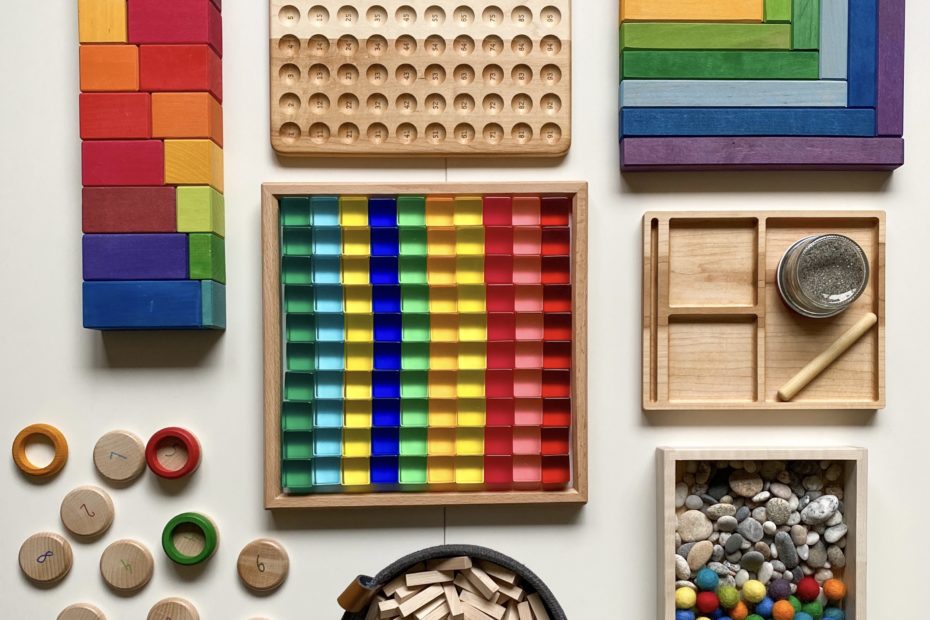Virtual school has been really hard for everyone this year–teachers have it tough, parents are working double-time, and the kids are hanging in there, doing better than we ever could have asked of them–but it’s still tough. The younger and more hands-on the kid is, the harder it is to catch on to new information in this digital school world. We’ve been putting a lot of energy into making math more tactile.
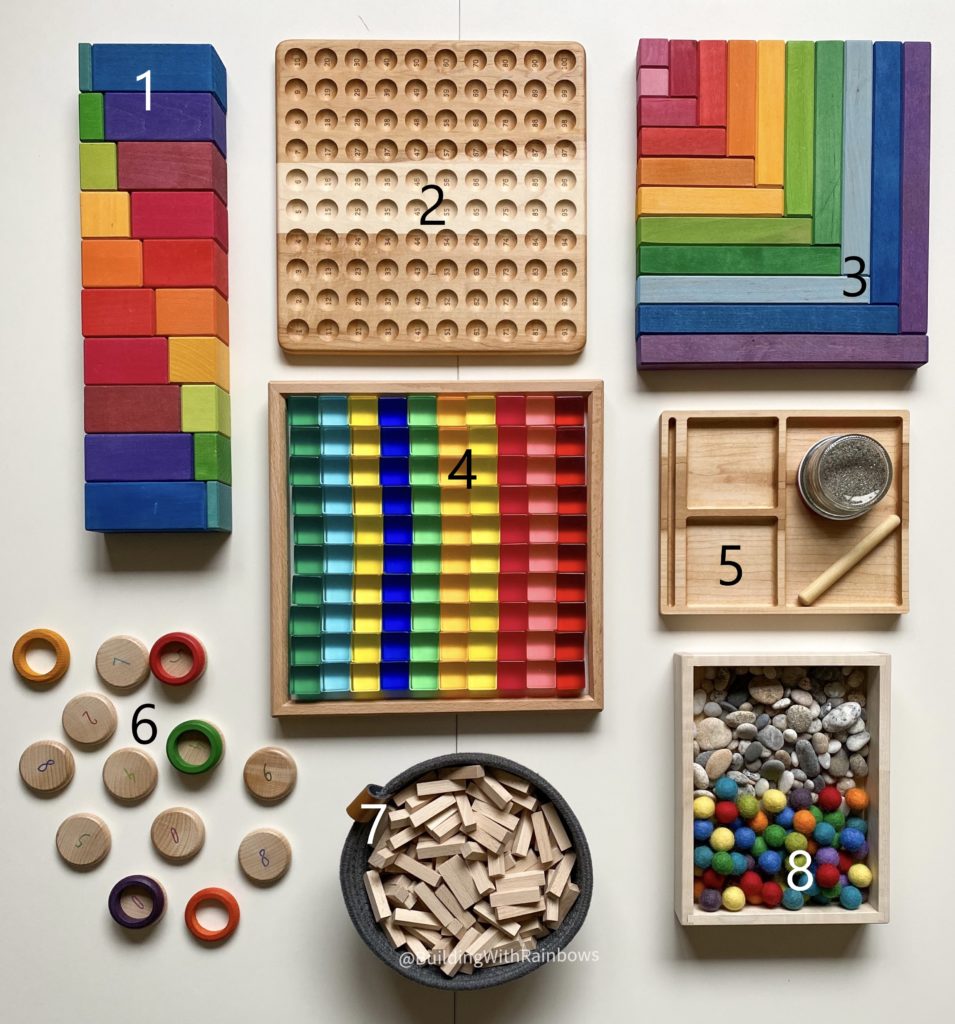
1. Grimm’s Stepped Counting Blocks (Canada, US)
and
3. Bauspiel Stepped Counting Blocks
Stepped Counting Blocks are a wonderful pre-math tool–kids are doing addition and subtraction conceptually without knowing it. Once kids begin to get an awareness of numbers and start working on addition and subtraction in school, these are great for translating the concepts kids know into numbers, and for modeling the reliability of addition and subtraction. Both the Grimms and Bauspiel sets work beautifully for this. The Grimms is great because the sizes and shapes are familiar already. The Basupeil is great because the “1” is a cube, and as such it is very effective for modeling volume as well.
You can read more about how these two sets compare in this post–but I would gladly recommend either for early math.
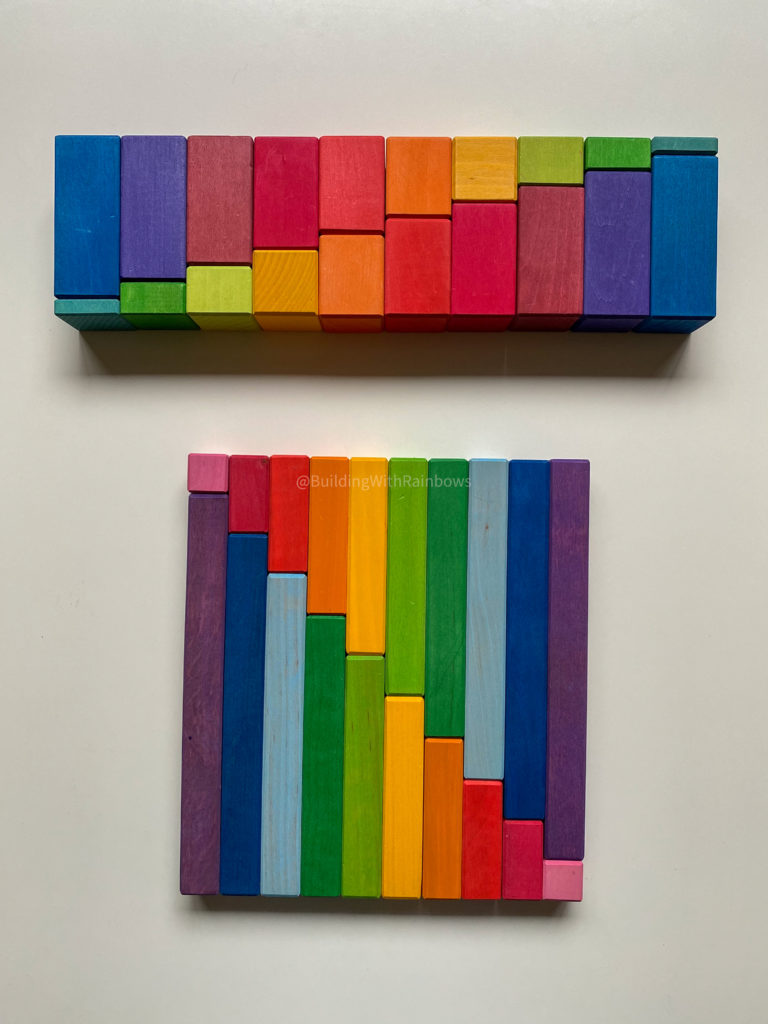
The 100 board has been an invaluable tool as we work on number progression. We started out with an unmarked board, but for Miss6, this one has proven much more effective. She uses it all the time during virtual school–helping understand and recognize the numbers her teacher is talking about.
Its been a game-changer for her understaning the concept of skip-counting too–it illustrates the landing point for each skip more clearly.
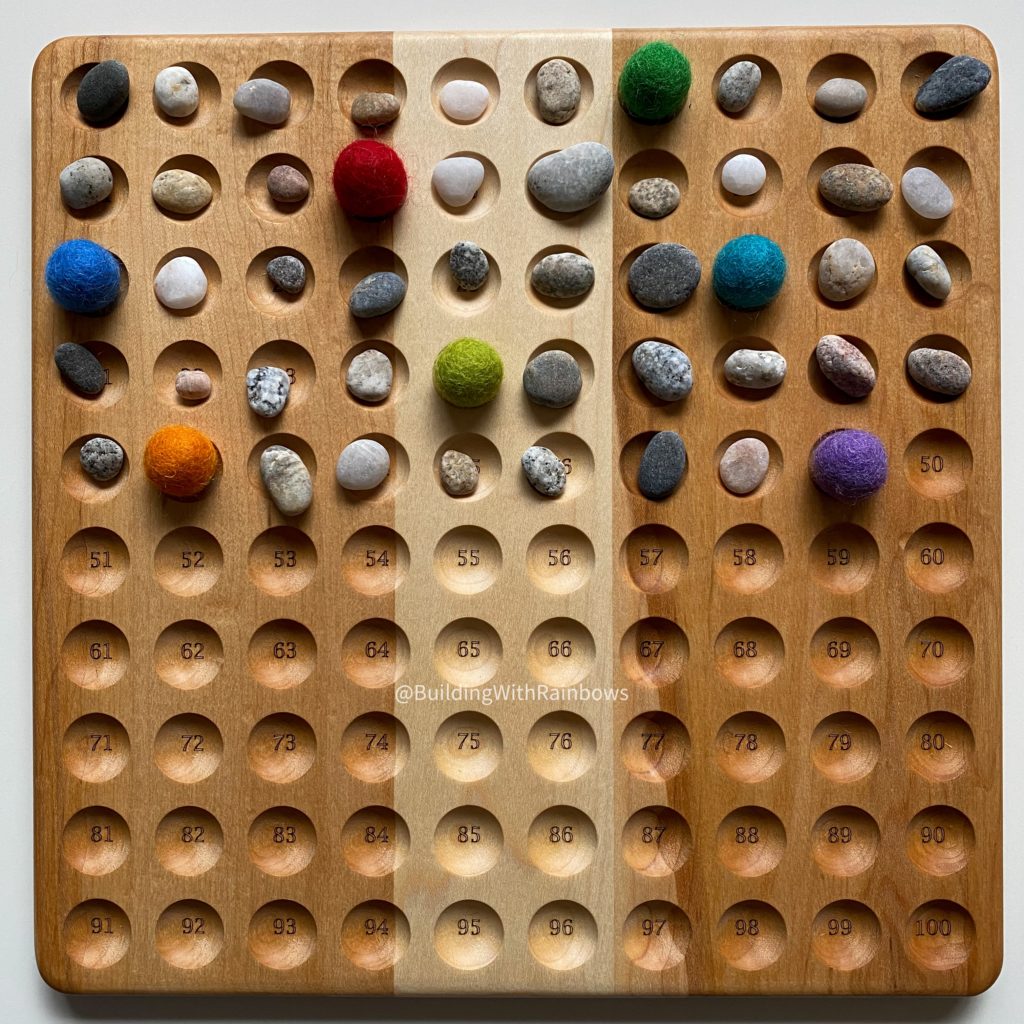
We have used the Bauspiel Lucent cubes to model subtraction, to mirror the work on the 100’s board, or simply to display it another way. Could they be described as a duplication of the intent of the 100’s board? Surely they could. But we’ve found the more ways we can model, the more variety in parts and pieces, the more effectively the idea registers. These are also Miss6’s favorite manipulative with the three-part tray (see next).
We’ve been using the 3-part tray from Modern Rascals to work on addition and subtraction. We started using only manipulatives, but as Miss6 got more comfortable with the concepts, we added sand to the tray, so she needs to convert between tangible pieces and more abstract numbers.
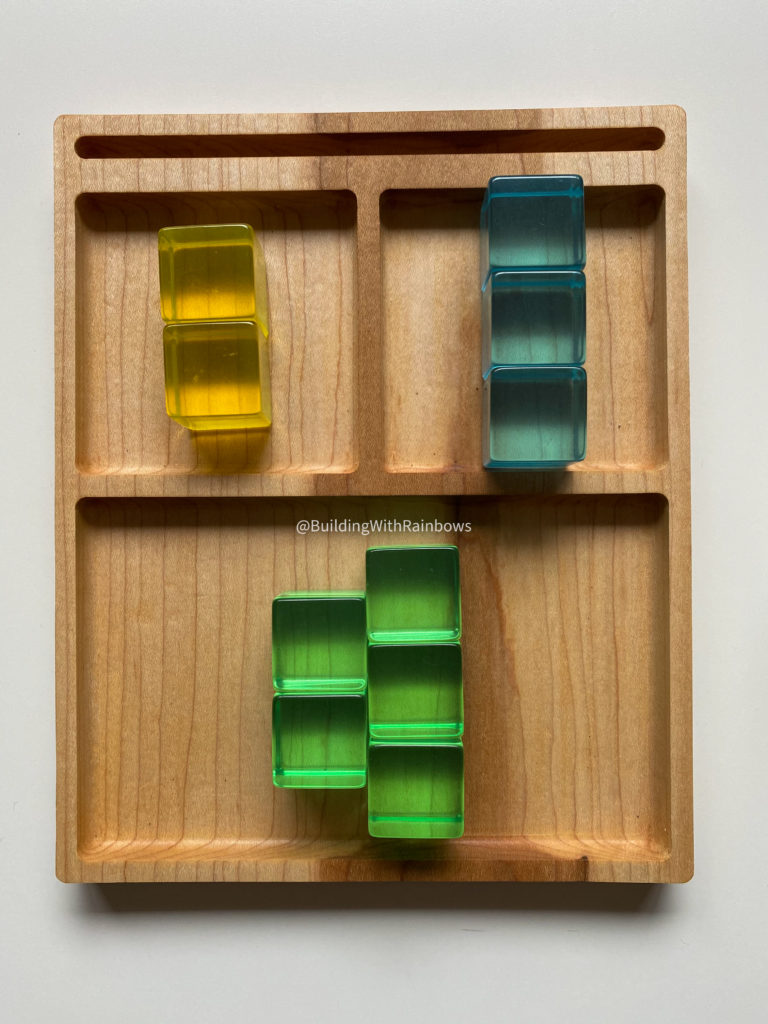
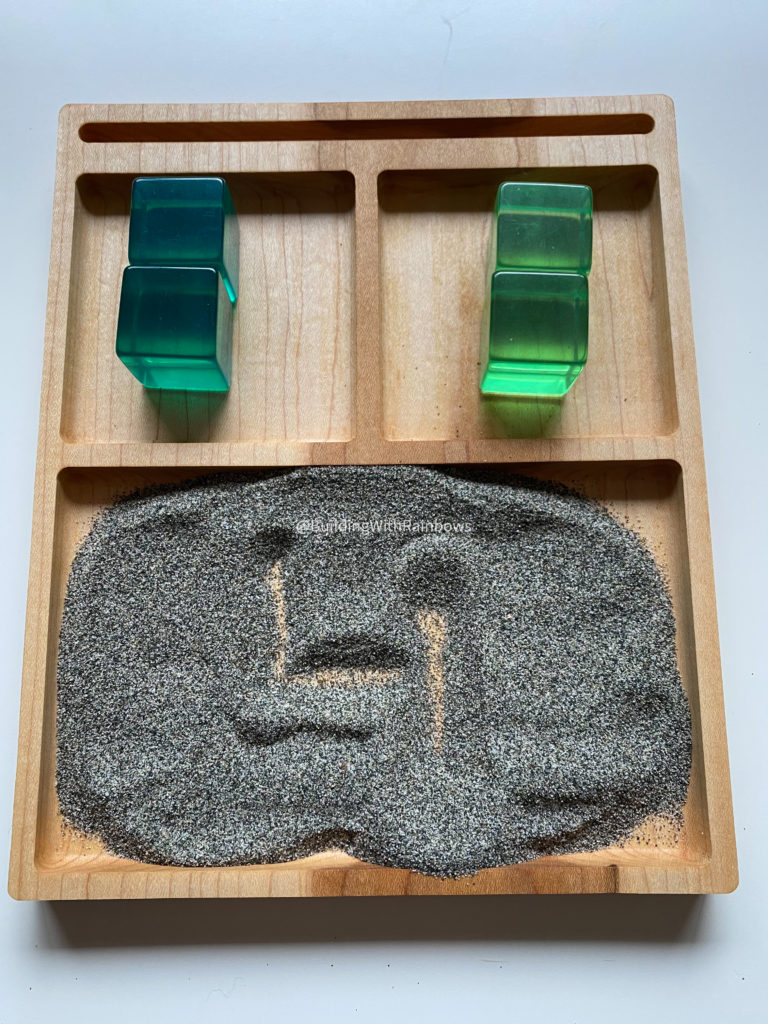
6. Grapat Number Coins and Rings (Canada, US)
Grapat Number Coins and Rings were the first tools we used for learning numbers. Sometimes making flowers with the number in the middle and the number of petals shown on the coin, later using rings to mark coins as numbers are called out.
7. Just Blocks
This is one of my favorite discoveries–we were struggling and struggling to explain tally marks, and how to know when to put the cross mark on. Bring on the Just Blocks Sticks! At 4cm by 1cm, they’re ideal. After 4 vertical marks, the horizontal mark fits perfectly.
These were already our favorite pieces from the Just Blocks sets–we use them all the time in builds, but discovering this is just the icing on the cake. Total love for these parts!
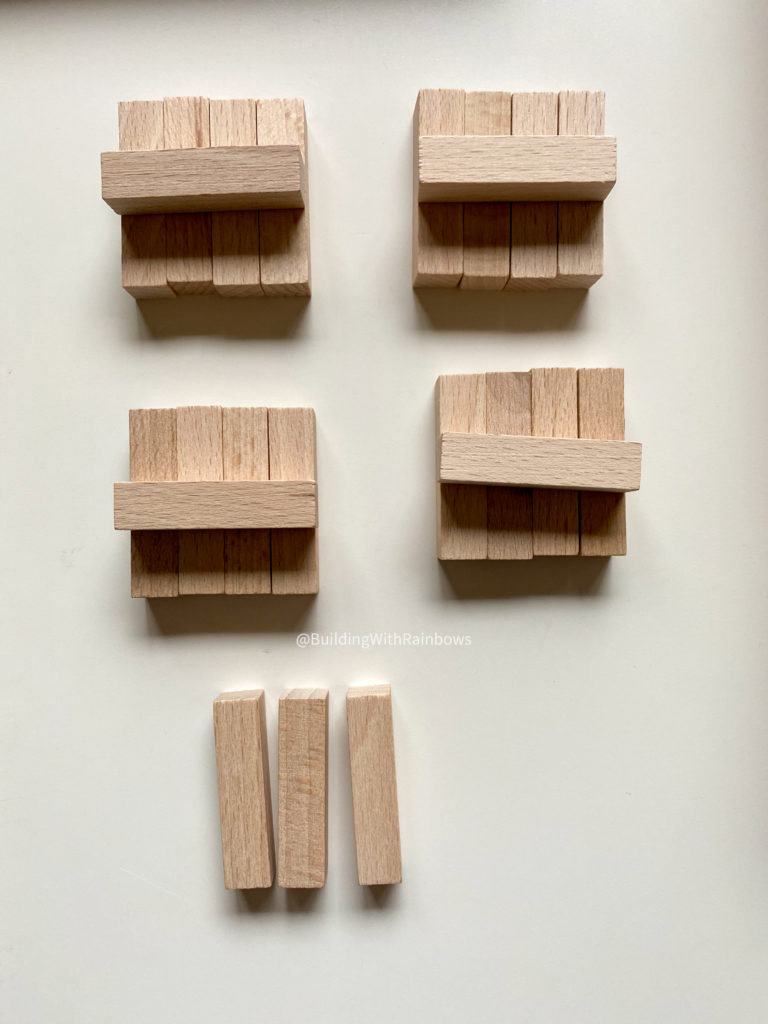
We have a wide variety of counters that we use. Miss6 loves having control over the counter of the day. Sometimes she’s in a shiny mood, other days she wants soft or varied textures. For skip-counting it’s helpful to have multiple types of counters, to be able mark the intervals.
Some of the links in this page are affiliate links. That means when you purchase through them, Building with Rainbows receives a small commission at no cost to you. Thank you so much for using them and supporting this blog.
